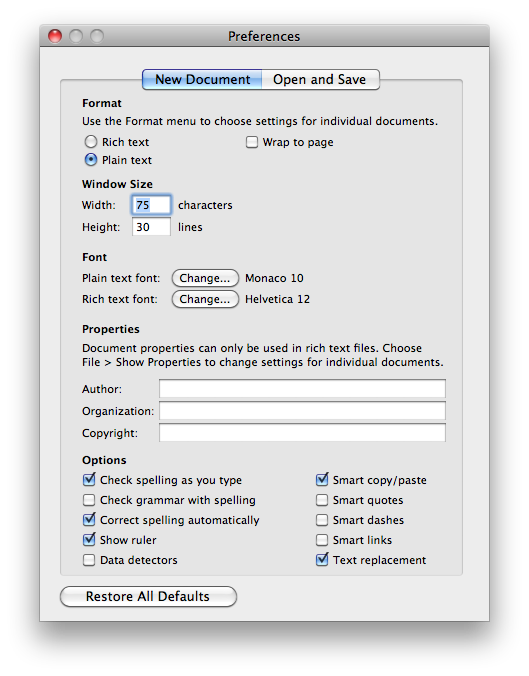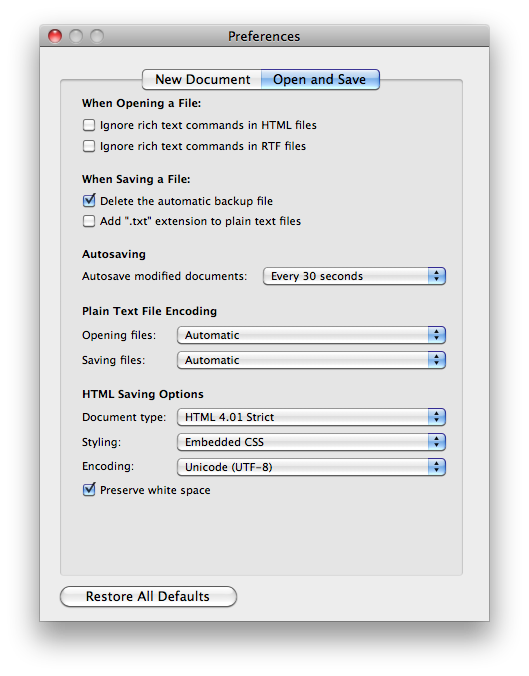FSL configuration
If you have used the FSL installer your shell should have already been setup for running the FSL tools. However, there are situations where you may need to carry out this configuration by hand, for example when installing FSL on a multi-user computer. How you do this will depend on what shell you are using - type echo ${SHELL} to find out what shell you are using.
Info
A shell is the command line you use to enter commands for your computer to run. There are several different shells available for UNIX-like OSes which use different command syntaxes to carry out the same tasks.
The instructions below will ask you to add lines of code to shell initialisation files. When doing this, make sure you are using a plain text editor, such as nano, gedit, or emacs. For example, if you are using the bash shell, you can edit the configuration file by typing nano ~/.bash_profile into a terminal.
Warning
Be careful when modifying your shell configuration/profile, as making a mistake could cause your terminal to become unusable.
Where is my shell configuration file?
Depending on the shell you are using, your shell configuration will be stored in a different file:
| Shell | Configuration file |
|---|---|
bash |
~/.bash_profile |
dash |
~/.bash_profile |
zsh |
~/.zprofile |
sh |
~/.profile |
ksh |
~/.profile |
csh |
~/.cshrc |
tcsh |
~/.tcshrc |
FSL configuration - bash/dash/zsh/sh/ksh
If you are using one of bash, dash, zsh, sh, or ksh, add the following lines to the bottom of your shell configuration file - change the value of FSLDIR if you have installed FSL to a different location:
# FSL Setup
FSLDIR=~/fsl
PATH=${FSLDIR}/share/fsl/bin:${PATH}
export FSLDIR PATH
. ${FSLDIR}/etc/fslconf/fsl.sh
FSL configuration - csh/tcsh
If you are using csh or tcsh, add the following lines to the bottom of your shell configuration file - change the value of FSLDIR if you have installed FSL to a different location:
# FSL Setup
setenv FSLDIR ~/fsl
setenv PATH ${FSLDIR}/share/fsl/bin:${PATH}
source ${FSLDIR}/etc/fslconf/fsl.csh
Once you have added these lines to your shell configuration, open a new terminal (or log out and log back in to your system) - you should now be able to use the FSL tools.
FSL executable directory - $FSLDIR/bin/ and $FSLDIR/share/fsl/bin/
All FSL commands are installed into $FSLDIR/bin/, however a set of "wrapper scripts" for every FSL command are also installed into $FSLDIR/share/fsl/bin/ - these wrapper scripts simply call the corresponding command in $FSLDIR/bin/.
We recommend that you add $FSLDIR/share/fsl/bin/ to your $PATH, rather than $FSLDIR/bin/, for a few reasons.
- All FSL commands are installed into
$FSLDIR/bin/, so if you add$FSLDIR/bin/to your$PATH, you should be able to access all FSL commands. However, there are other non-FSL commands located in$FSLDIR/bin/(such aspython,conda, etc) which may adversely interfere with your shell environment.
If you add $FSLDIR/bin/ to your $PATH and then run the python command, you may be unintentionally using $FSLDIR/bin/python, instead of the python command you were intending to use.
Adding $FSLDIR/share/fsl/bin/ to your path instead of $FSLDIR/bin/ will minimise the chances of a naming collision between commands provided by FSL and other commands on your system.
- Several FSL tools are written in the Python programming language, and are intended to be executed by the
$FSLDIR/bin/pythoninterpreter. Python programs can sometimes be affected by other Python installations and libraries that are installed on a user's system. To avoid this situation, the wrapper scripts in$FSLDIR/share/fsl/bin/will execute Python commands in an "isolated mode", so that they should not be affected by other Python environments or libraries that you may have installed on your system.
Configuring FSL on multi-user systems
You have several options for automatically setting up FSL for all users on a system, all beyond the scope of this document, but here are some suggestions on how you might go about this.
-
Change the template used for new user accounts (e.g.
/etc/skelon Linux). New users will then get a suitably modified settings file. -
Store the settings in an NFS shared folder. You could ensure that the default settings file looks for and sources a settings file on an NFS server. This is useful for a compute cluster as you only have to edit one file to have it change everywhere.
-
Modify the system-wide
.profileor.cscrcfile. On Linux you can create filesfsl.shandfsl.cshin/etc/profile.dcontaining the settings.
Calling FSL from MATLAB
By default, the fslinstaller.py script will add a few lines to ~/Documents/MATLAB/startup.m to allow you to call FSL commands from MATLAB. If you need to perform this step manually, the MATLAB commands are as follows (change the value of FSLDIR to the location that you installed FSL into):
% FSL Setup
setenv( 'FSLDIR', '/Users/steve/fsl' );
setenv('FSLOUTPUTTYPE', 'NIFTI_GZ');
fsldir = getenv('FSLDIR');
fsldirmpath = sprintf('%s/etc/matlab',fsldir);
path(path, fsldirmpath);
clear fsldir fsldirmpath;
Customising FSL - environment variables
You can change various aspects of FSL behaviour by using environment variables. You can find a list of all of the environment variables that FSL understands below.
When the FSL configuration commands in your shell profile are run, default settings are applied. You can override these default settings simply by specifying different values for the relevant environment variable.
Perhaps the easiest method for customising FSL is to add your custom variable values to your shell configurtaion file (see above).
For example, if you are using the bash shell, and you wish to change the output file format of the FSL tools to uncompressed NIFTI images (.nii images, instead of the default .nii.gz), open ~/.bash_profile in a plain text editor, and change the FSL configuration lines to this (making sure that the value for FSLDIR is correct for your system):
# FSL Setup
FSLDIR=~/fsl
. ${FSLDIR}/etc/fslconf/fsl.sh
PATH=${FSLDIR}/share/fsl/bin:${PATH}
export FSLDIR PATH
# My custom values for FSL environment variables
export FSLOUTPUTTYPE=NIFTI
There are other places you could store your custom values for controlling FSL - look inside the $FSLDIR/etc/fslconf/fsl.sh file for more details.
| Variable name | Default value | Possible values | Purpose |
|---|---|---|---|
FSLDIR |
- | - | Points to the folder you installed FSL into, for example /Users/steve/fsl |
FSLOUTPUTTYPE |
NIFTI_GZ |
NIFTI_GZ |
Output results as a single gzip compressed NIFTI format file |
NIFTI |
Output as a single NIFTI format file | ||
NIFTI2_GZ |
Output results as a single gzip compressed NIFTI2 format | ||
NIFTI2 |
Output as a single NIFTI2 format file | ||
NIFTI_PAIR |
Output as NIFTI header/image pair | ||
NIFTI_PAIR_GZ |
Output as gzip compressed NIFTI header/image pair | ||
NIFTI2_PAIR_GZ |
Output as gzip compressed NIFTI2 header/image pair | ||
NIFTI2_PAIR |
Output as NIFTI2 header/image pair | ||
FSL_LOAD_NIFTI_EXTENSIONS |
0 |
0 or 1 |
Controls whether FSL tools will load any NIfTI extensions stored in input files, and pass them through to output files. The default behaviour is to '''not''' load NIfTI extensions. |
FSL_SKIP_GLOBAL |
0 |
0 or 1 |
Controls whether BLAS threading is disabled. The default behaviour (0 or unset) is to disable BLAS threading, as it does not give performance benefits for most FSL tools. |
FSLTCLSH |
$FSLDIR/bin/fsltclsh |
- | Path to the location of the TCL interpreter you wish to use, defaults to the interpreter installed in $FSLDIR |
FSLWISH |
$FSLDIR/bin/fslwish |
- | Path to the location of the TCL/TK interpreter you wish to use, defaults to the interpreter installed in $FSLDIR |
FSLCONFDIR |
$FSLDIR/config |
- | Path to the location of the configuration files used to compile FSL - only necessary for compiling the source code |
FSLDEVDIR |
- | - | Defines the location you are building FSL into when compiling the source code. This has to be set if you want to build a single project without running the full compilation script |
Editing text files
Whilst using FSL you are likely to need to use a text editor at some point, for example to create a fsl.sh settings file, a ~/.bash_profile or ~/.zprofile shell configuration, or an FEAT explanatory variable (EV) timing file.
There are lots of plain text editors available - some suggestions can be found below. Or, you may already be familiar with an advanced editor such as VS Code, Emacs, or vim.
nano
One of the simplest options is a terminal-based program called nano. This is installed on nearly all macOS / Linux computers, and is old-fashioned, but easy to use. Simply type nano <file_to_edit> into a terminal.
TextEdit (macOS)


macOS comes with a built in editor called TextEdit (look in /Applications). By default, TextEdit creates Rich Text documents which FSL cannot use, so you need to change the settings so that it will create Plain Text files. Do this by opening the preferences window (TextEdit -> Preferences) and in the New Document tab choose Plain Text from the Format section. Then in the Open and Save tab deselect Add ".txt" extension to plain text files. You can now close this window and open a new file with File -> New.
Linux
The Gnome desktop ships with an editor called Gedit which is straightforward to use. To start it type gedit, or gedit <file_to_edit> in a terminal.
Windows
If you have installed FSL on Windows, using the Windows Subsystem for Linux, you can use nano or gedit to edit plain text files (although you may need to install gedit first).
The Windows Notepad program is also a good choice for editing plain-text files on Windows, although you may need to make sure that Notepad saves files with UNIX-compatible line-endings. If you have trouble with text files created with Notepad, or another Windows editor, you could try converting it with the fslFixText tool.